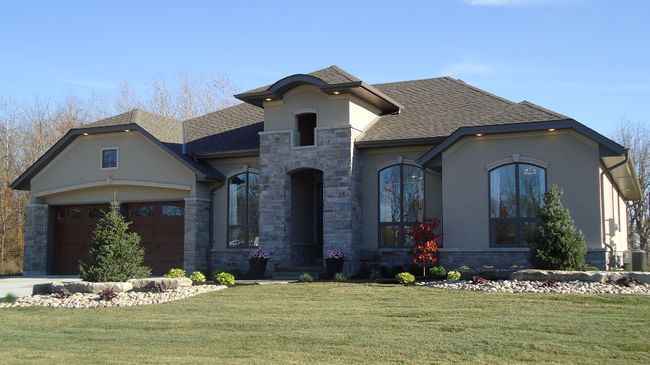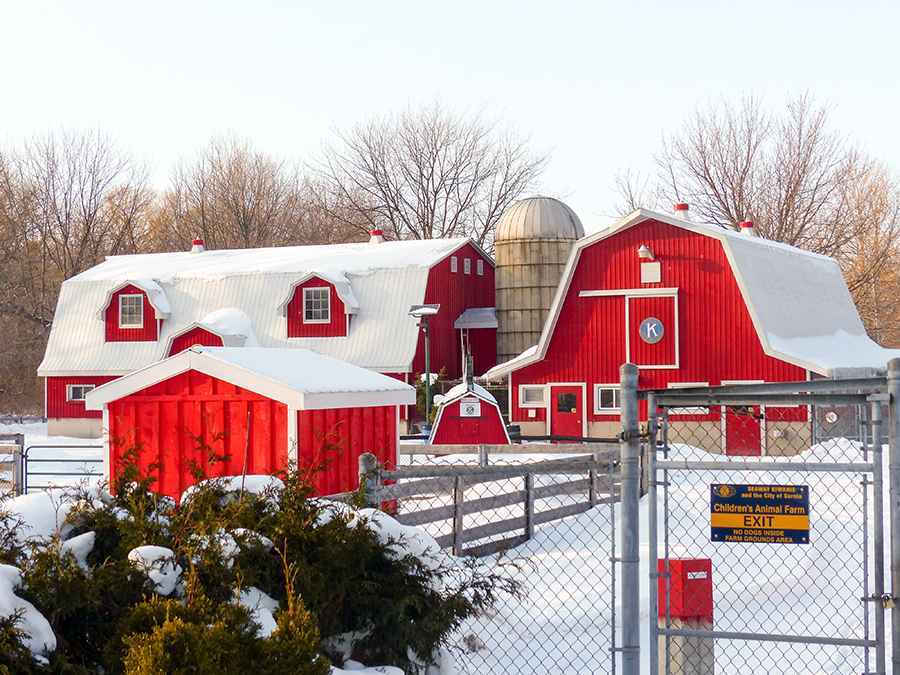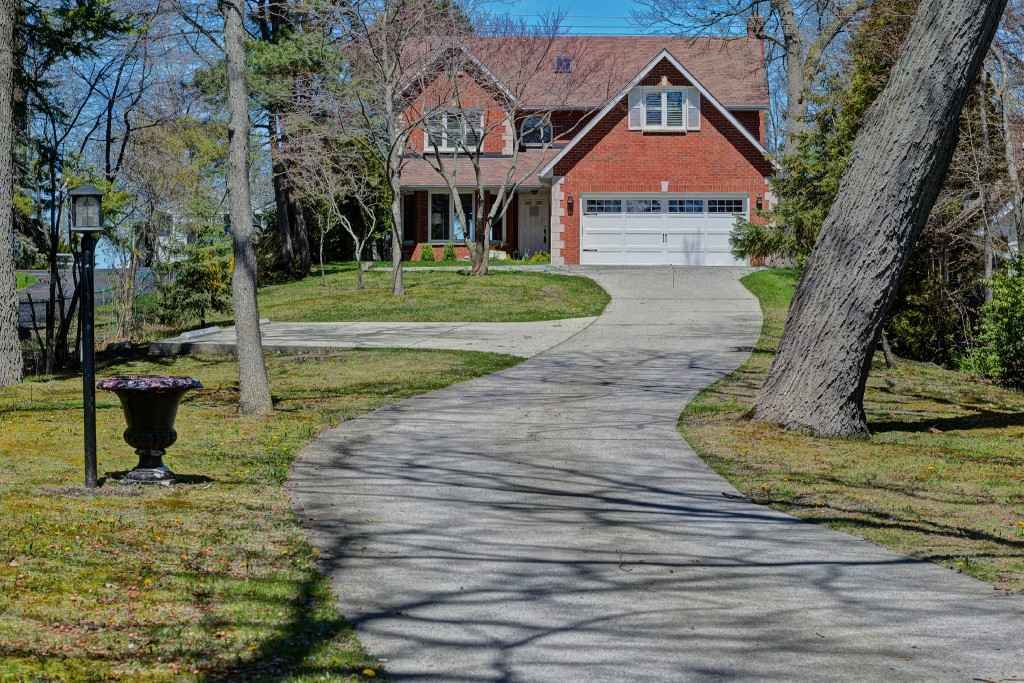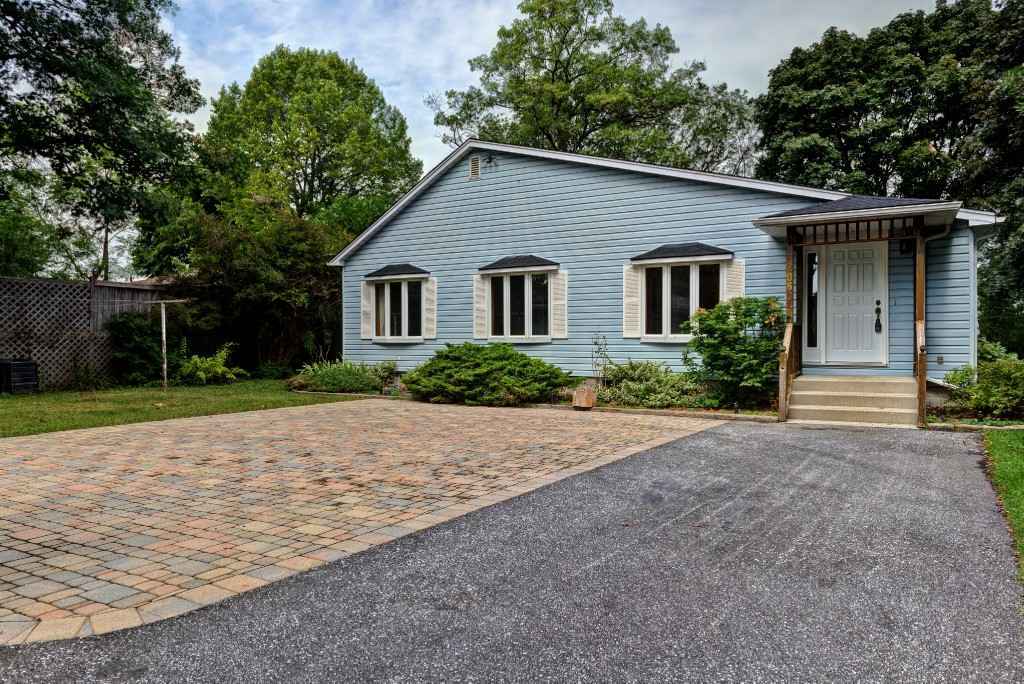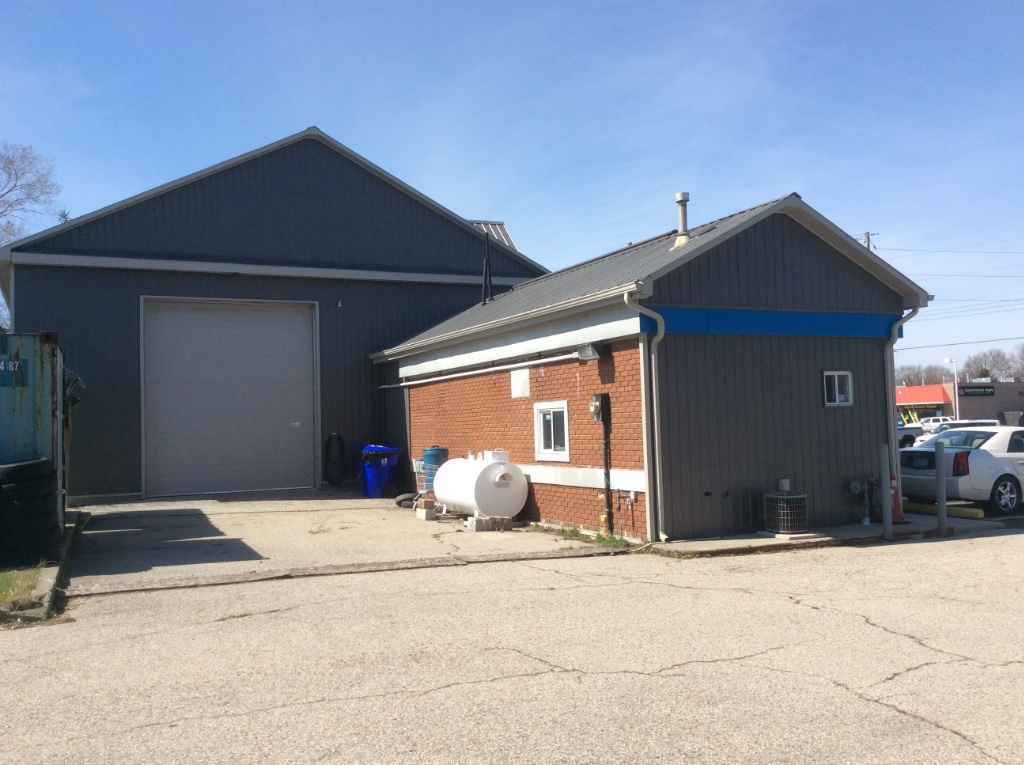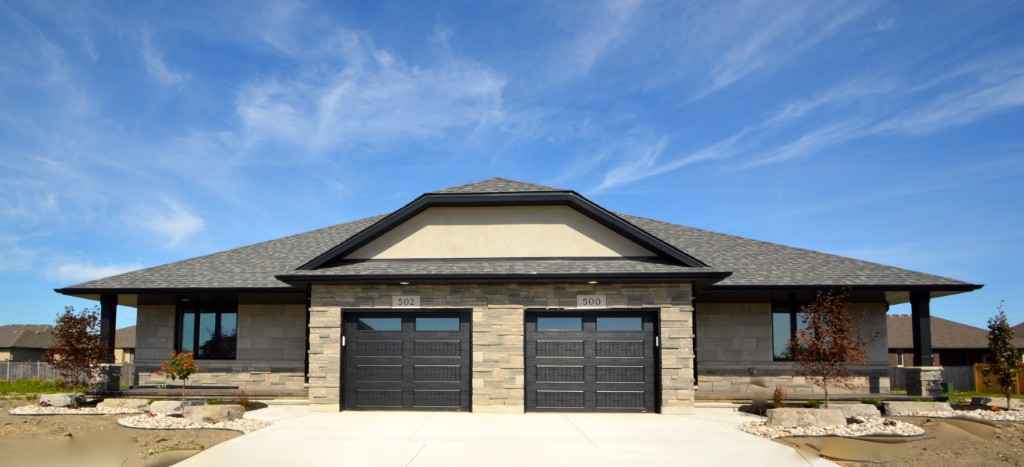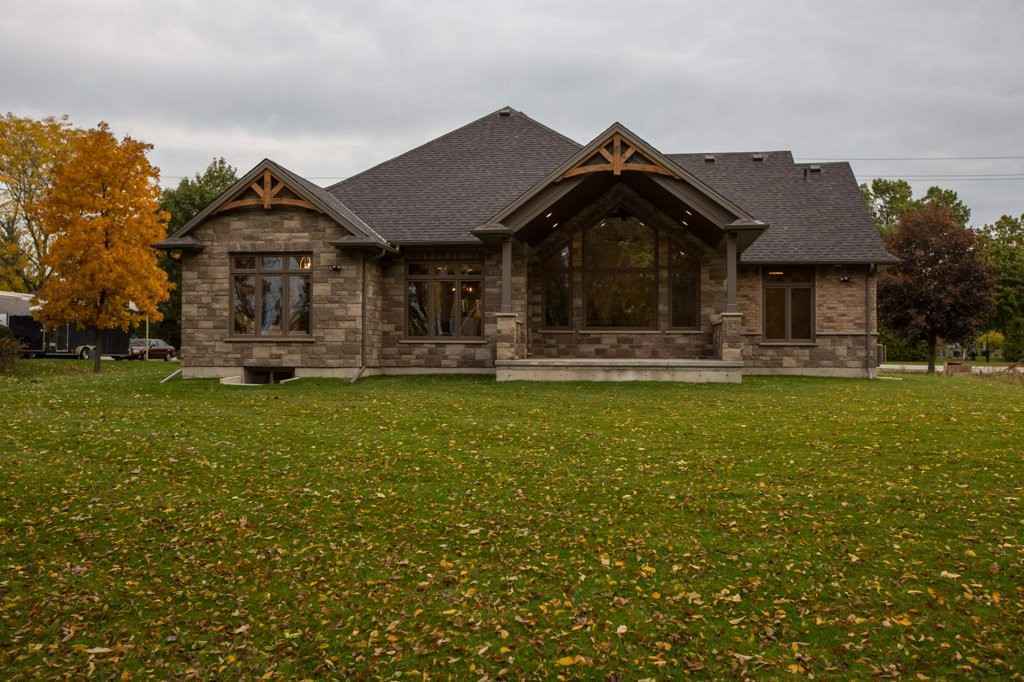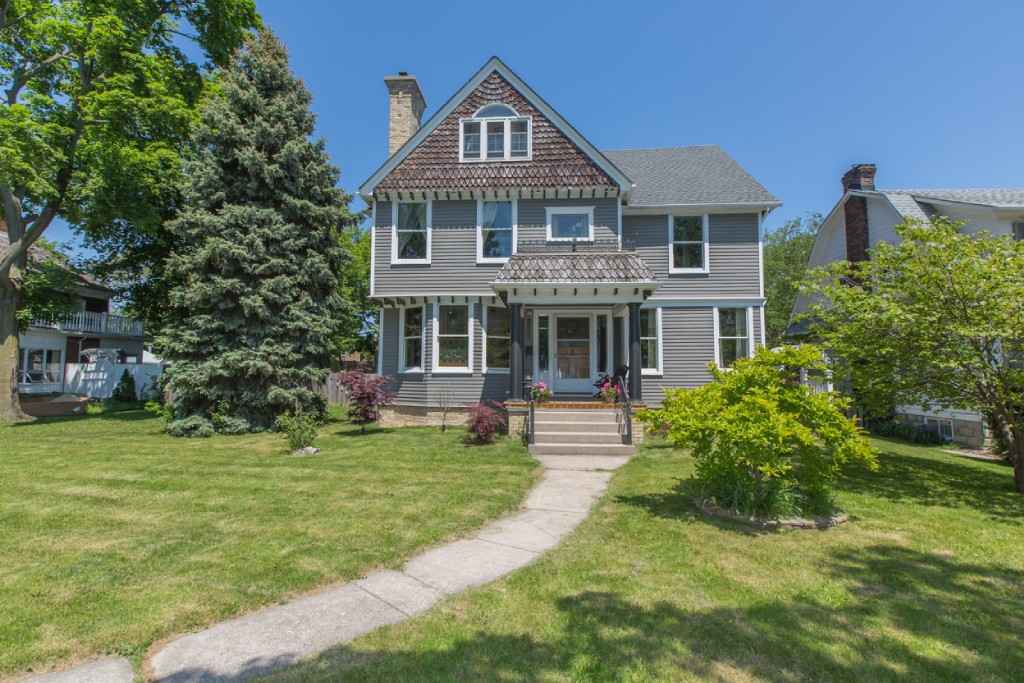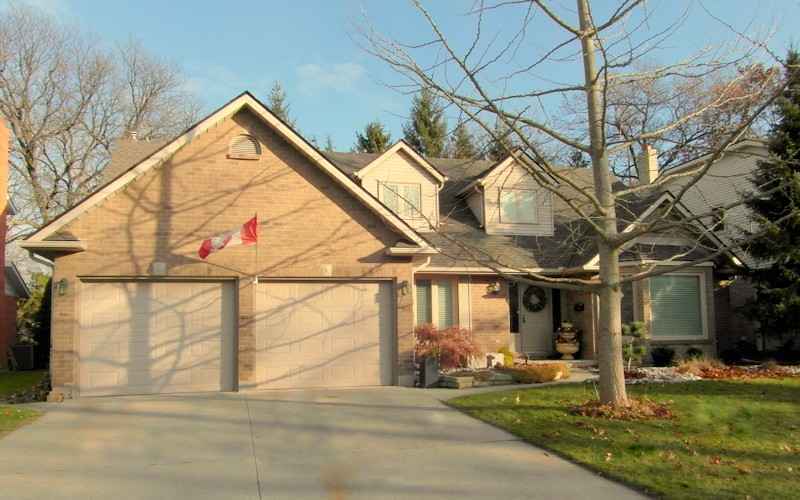Sarnia is a city in Southwestern Ontario, Canada, and had a 2016 population of 71,594. It is the largest city on Lake Huron and in Lambton County. Sarnia is located on the eastern bank of the junction between the Upper and Lower Great Lakes where Lake Huron flows into the St. Clair River, which forms the Canada-United States border, directly across from Port Huron, Michigan. The city's natural harbour first attracted the French explorer La Salle, who named the site "The Rapids" when he had horses and men pull his 45 tonnes (50 short tons; 44 long tons) barque "Le Griffon" up the almost four-knot current of the St. Clair River on 23 August 1679.
Sarnia is located on the eastern shore of Lake Huron at its extreme southern point where it flows into the St. Clair River. Most of the surrounding area is flat, and the elevation ranges from 169 metres (554 ft) and 281 metres (922 ft) above sea level. The soil mostly comprises clay. Despite this high percentage of clay, the soil is remarkably rich for cultivation. Prior to the Ice Age, glaciers covered most of the area, as can be seen not only by the existence of the Great Lakes themselves but also of alluvial sand deposits, terminal moraines, and rich oil reserves. The entire area was submerged and plant and animal matter formed many layers of sediment as they settled after the waters receded.
There are more than 100 parks in Sarnia, the largest being Canatara Park, which covers more than 200 acres along the shore of Lake Huron. Canatara is an Ojibwe word that means Blue Water. The park was opened 24 May 1933.[149] Within the park is Lake Chipican, a haven for 280 different species of birds on their migration routes. The park also maintains a Children's Animal Farm as part of Sarnia's commitment to wildlife. The annual "Christmas on the Farm" weekend event held at the Farm in early December is a popular community event enjoyed by families. Canatara Park is one of the first parks in southern Ontario to feature an outdoor fitness equipment installation.
The largest recreational park in Sarnia is Germain Park, which incorporates five baseball diamonds, four soccer fields, an outdoor pool, and the Community Gardens. As a memorial to Canadian aviators who gave their lives in World War II, one of the remaining Canadair Sabres in Canada is on display in the park.
Wiltshire Park, Woodland, Oak Acres, Wees Beach, Oakwood Corners, Woodrow Shores, and Blackwell, are part of the North End of Sarnia, which begins immediately north of Ontario Highway 402 and terminates at the shore of Lake Huron. Coronation Park, Heritage Park, College Park, The Tree Streets, and Sherwood Village are some of the neighbourhoods south of the highway. The village of Blue Water was built to house workers and their families in Chemical Valley during the construction of Polymer Corporation and at one point had nearly 3,000 residents.
The Sarnia-Lambton Workforce Development Board states in its March 2011 Labour Market Report that: "Even though employment in both the petrochemical and agricultural industries has declined significantly in recent years, these two industries remain central drivers of the Sarnia Lambton economy."
Sarnia is located on the eastern shore of Lake Huron at its extreme southern point where it flows into the St. Clair River. Most of the surrounding area is flat, and the elevation ranges from 169 metres (554 ft) and 281 metres (922 ft) above sea level. The soil mostly comprises clay. Despite this high percentage of clay, the soil is remarkably rich for cultivation. Prior to the Ice Age, glaciers covered most of the area, as can be seen not only by the existence of the Great Lakes themselves but also of alluvial sand deposits, terminal moraines, and rich oil reserves. The entire area was submerged and plant and animal matter formed many layers of sediment as they settled after the waters receded.
There are more than 100 parks in Sarnia, the largest being Canatara Park, which covers more than 200 acres along the shore of Lake Huron. Canatara is an Ojibwe word that means Blue Water. The park was opened 24 May 1933.[149] Within the park is Lake Chipican, a haven for 280 different species of birds on their migration routes. The park also maintains a Children's Animal Farm as part of Sarnia's commitment to wildlife. The annual "Christmas on the Farm" weekend event held at the Farm in early December is a popular community event enjoyed by families. Canatara Park is one of the first parks in southern Ontario to feature an outdoor fitness equipment installation.
The largest recreational park in Sarnia is Germain Park, which incorporates five baseball diamonds, four soccer fields, an outdoor pool, and the Community Gardens. As a memorial to Canadian aviators who gave their lives in World War II, one of the remaining Canadair Sabres in Canada is on display in the park.
Wiltshire Park, Woodland, Oak Acres, Wees Beach, Oakwood Corners, Woodrow Shores, and Blackwell, are part of the North End of Sarnia, which begins immediately north of Ontario Highway 402 and terminates at the shore of Lake Huron. Coronation Park, Heritage Park, College Park, The Tree Streets, and Sherwood Village are some of the neighbourhoods south of the highway. The village of Blue Water was built to house workers and their families in Chemical Valley during the construction of Polymer Corporation and at one point had nearly 3,000 residents.
The Sarnia-Lambton Workforce Development Board states in its March 2011 Labour Market Report that: "Even though employment in both the petrochemical and agricultural industries has declined significantly in recent years, these two industries remain central drivers of the Sarnia Lambton economy."
